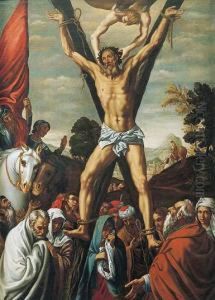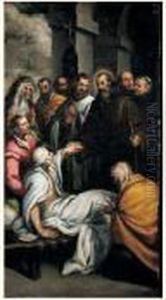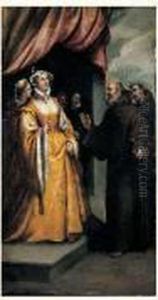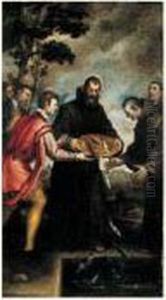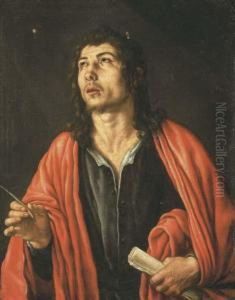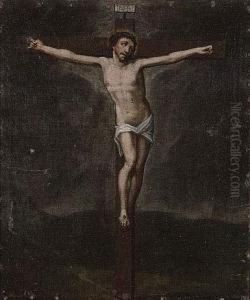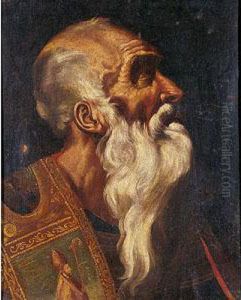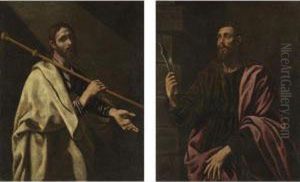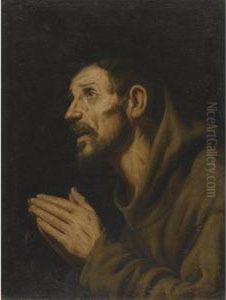Luis Tristan Paintings
Luis Tristán de Escamilla, known simply as Luis Tristán, was a Spanish painter born in 1585 in Toledo, Spain. He is considered one of the most notable figures of the Spanish Baroque painting movement, though he also incorporates elements from the Mannerist tradition in his works. Tristán's artistic journey began under the tutelage of El Greco, one of the most prominent painters of the time, in the early 17th century. This apprenticeship had a profound influence on Tristán's style, as evidenced by the shared traits between master and student, such as elongated figures and a dramatic use of light and shadow. However, Tristán also developed his own distinctive approach, particularly in his treatment of color and composition.
Despite his training with El Greco, Tristán managed to carve out a unique niche for himself in the Spanish art world. He worked extensively in Toledo, but his works were also sought after in other parts of Spain. His oeuvre includes religious paintings, portraits, and altarpieces, all marked by a deep emotional intensity and a keen attention to detail. Among his most famous works are the 'Altarpiece of the Espiritu Santo' in Toledo and 'The Adoration of the Shepherds'.
Tristán's career was not long, as he died prematurely in 1624, but his impact on Spanish painting was significant. He bridged the gap between the Mannerist and Baroque periods in Spain, and his works reflect a transition in style and thought that would influence subsequent generations of artists. Despite his relatively short life and career, Luis Tristán's contributions to Spanish art have earned him a place among the notable painters of the early 17th century. His legacy is evident in the way he combined the teachings of El Greco with his own personal innovations, creating a body of work that continues to be admired for its emotional depth and technical mastery.
